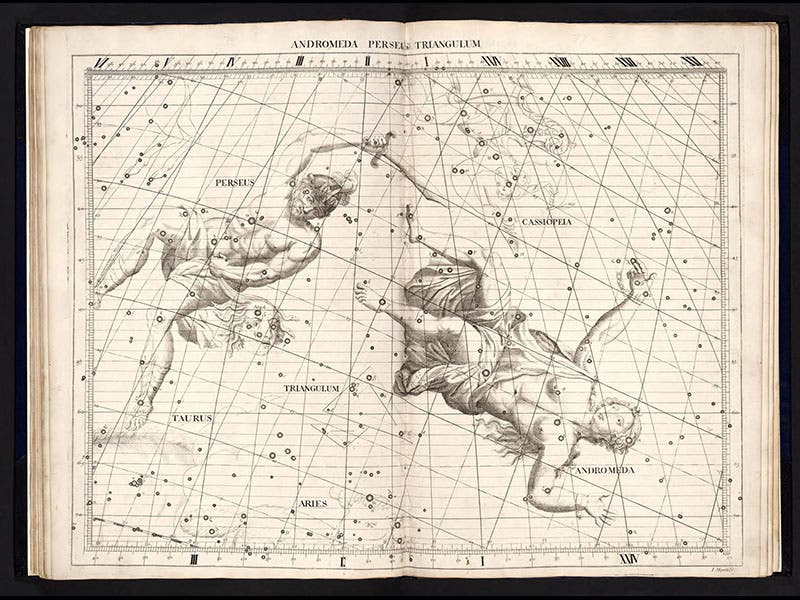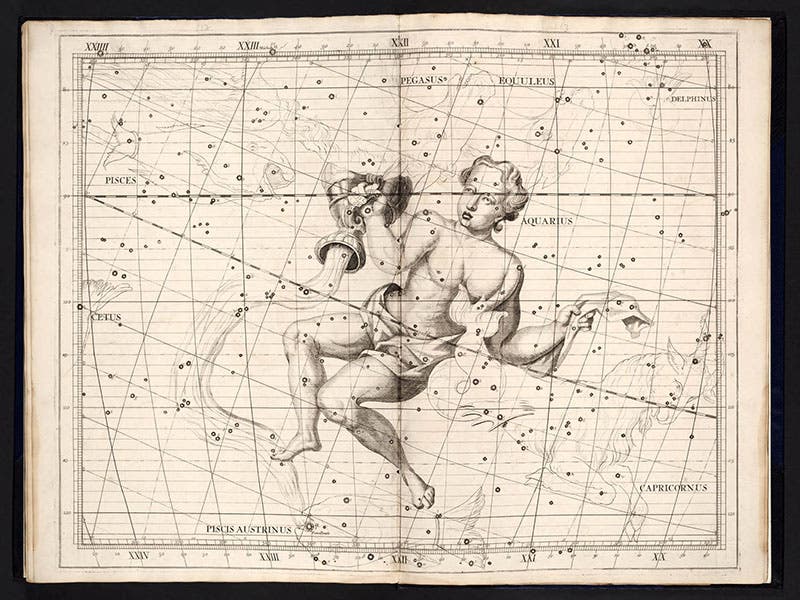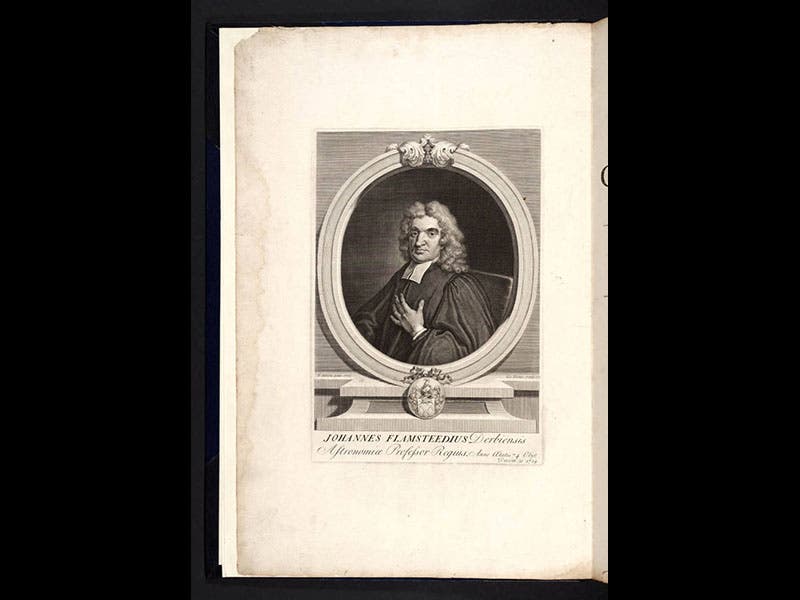Scientist of the Day - John Flamsteed
John Flamsteed, an English astronomer, was born Aug. 19, 1646. Flamsteed became the first Astronomer Royal of England in 1675, and he worked at the newly-built Greenwich Observatory for 44 years, observing the planets and the moon, and compiling a detailed catalog and atlas of the stars. The catalog is very important, since all the observations were Flamsteed's own, but his Atlas coelestis (1729) is of more interest to the general viewer, with its large constellation figures giving order to fields of stars. Some of the plates, such as Perseus and Andromeda (see first image above) and Bootes and the Hunting Dogs (second image) are quite pleasing, but others, such as Virgo (third image) and Aquarius (fourth image) are not especially attractive; Virgo, in particular, has her wings on the front, as if the constellation figure were originally meant to be seen from the rear, and then, at the last minute, was flipped around, without re-adjusting the position of the wings.
Whatever its failings in the aesthetics department, Flamsteed’s Atlas is of great significance for stellar astronomy, since it shows many more stars than any previous atlas, and the positions have been very accurately determined. The work was published ten years after Flamsteed’s death, and it carried a frontispiece portrait (fifth image) to commemorate England’s first Astronomer Royal.
Dr. William B. Ashworth, Jr., Consultant for the History of Science, Linda Hall Library and Associate Professor, Department of History, University of Missouri-Kansas City. Comments or corrections are welcome; please direct to ashworthw@umkc.edu.











